You may not even realize but countless animal species are edging closer to extinction. These magnificent creatures, many of which you may never have heard of, are disappearing due to habitat loss, climate change, and poaching. As guardians of the planet, it’s crucial to know which animals are on the brink of vanishing, so we can take action to help preserve these irreplaceable pieces of biodiversity.
1. Vaquita
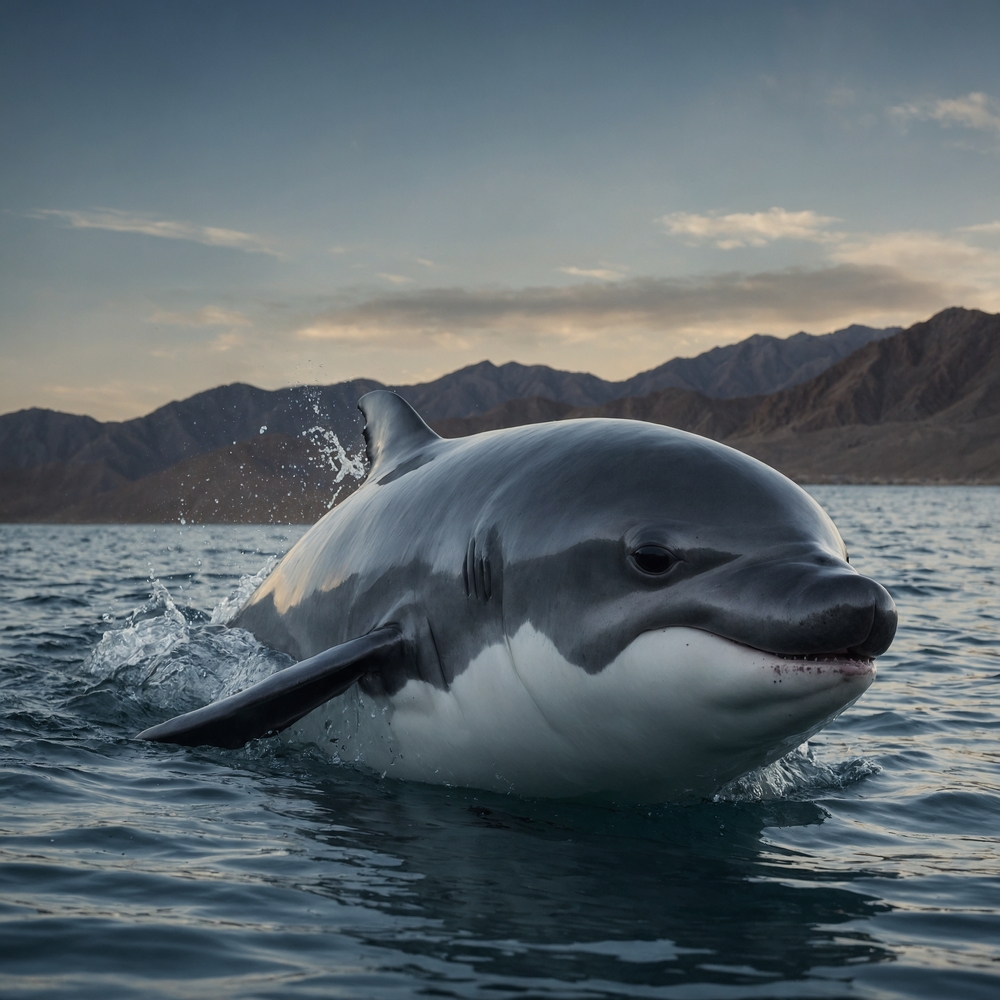
You may have never heard of the vaquita, a small porpoise that graces the waters of the northern Gulf of California. Known for its gentle smile and panda-like eyes, the vaquita is the world’s most endangered marine mammal, with fewer than 10 individuals remaining. Due to illegal fishing operations, particularly the use of gillnets, their numbers have plummeted at an alarming rate. The vaquita doesn’t just face extinction threats alone; its decline signifies a larger ecological imbalance that could affect the entire marine ecosystem.
A report by the International Union for Conservation of Nature (IUCN) highlights the dire situation of the vaquita, urging immediate international cooperation to enforce fishing bans in their habitat. Despite efforts to raise awareness and impose stricter regulations, their numbers continue to dwindle. You wonder if humanity will find the resolve to save this gentle marine sentinel before time runs out. The survival of the vaquita is not just about saving a species; it’s about preserving the intricate web of life in the sea.
2. Sumatran Rhino
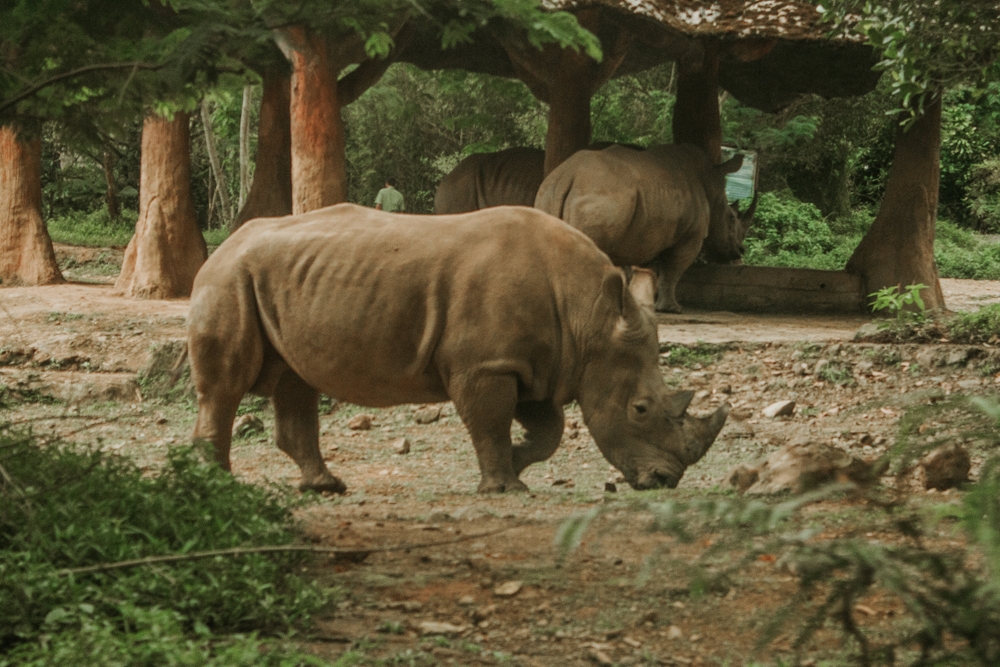
The Sumatran rhino is the smallest and hairiest of the rhino family, known for its rust-colored coat and solitary nature. Native to the dense forests of Indonesia, this rhino is now critically endangered with fewer than 80 individuals left in the wild. Habitat loss due to deforestation and poaching for their horns have driven these rhinos to the brink of extinction. Each day, you hear of more forests disappearing, taking with them the shelter and food that these rhinos depend on.
What makes the Sumatran rhino’s plight even more concerning is its low reproductive rate, which makes population recovery a challenging task. Conservationists are working tirelessly to protect their habitats and establish breeding programs to increase their numbers. It’s a race against time, and you can’t help but wonder if future generations will ever see these magnificent creatures in their natural habitats. The story of the Sumatran rhino is a poignant reminder of what’s at stake in the conservation battle.
3. Kakapo
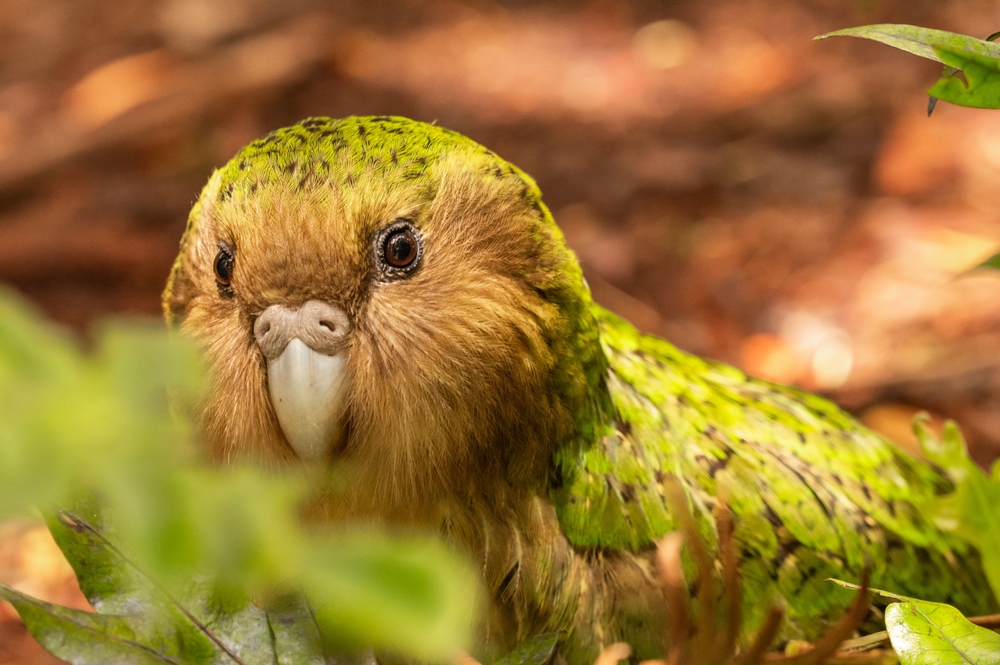
The kakapo, a flightless parrot native to New Zealand, captivates with its moss-green feathers and endearing, owl-like face. Once abundant across New Zealand, the kakapo now teeters on the edge of extinction with fewer than 250 birds remaining. They have fallen victim to invasive species like rats and stoats, which prey on their eggs and chicks. The kakapo’s unique nocturnal and ground-dwelling lifestyle, once an advantage, now places them in grave danger.
According to a study by the New Zealand Department of Conservation, the kakapo’s survival hinges on intense conservation efforts, including habitat protection and predator control. You might be inspired by the dedicated rangers who monitor these parrots closely, hand-rearing chicks and ensuring their habitats are secure. The kakapo’s plight is a vivid example of how human intervention can either drive a species to extinction or save it from the brink. As you reflect on the kakapo’s journey, you’re reminded of the importance of balance in nature.
4. Amur Leopard
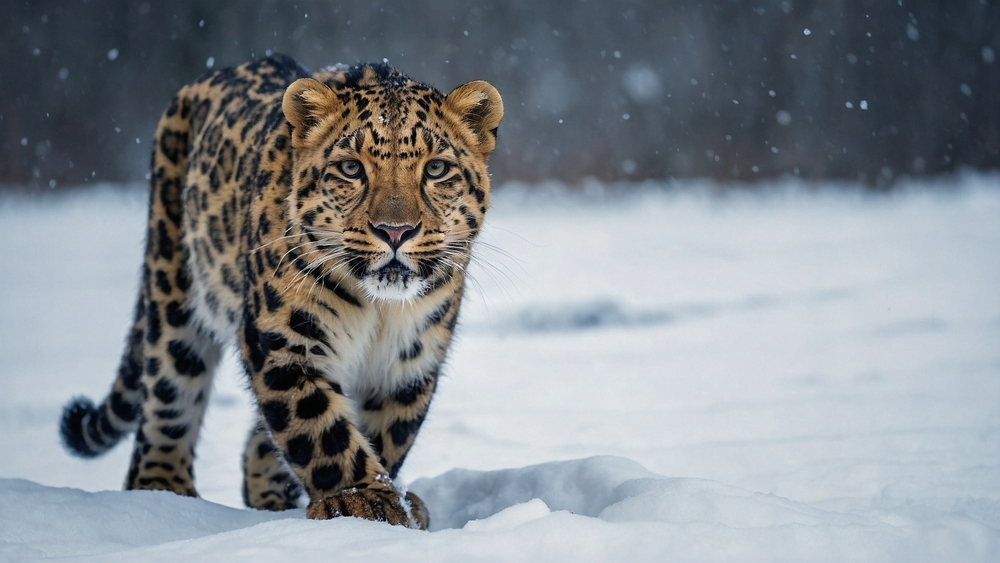
The Amur leopard, with its striking spotted coat, is one of the most beautiful and rare big cats in the world. Found in the temperate forests of the Russian Far East, it is critically endangered, with estimates suggesting fewer than 100 individuals remaining. Poaching and habitat destruction due to logging and human encroachment have decimated their populations. You can picture these solitary hunters stealthily navigating the snow-covered landscapes, an awe-inspiring sight that’s becoming increasingly rare.
Efforts are underway to restore their natural habitat and reduce human-wildlife conflict, offering a glimmer of hope for these elusive creatures. Conservationists are working to expand protected areas and implement anti-poaching measures to safeguard their future. As you delve deeper into their world, you realize that saving the Amur leopard is not just about conserving a species, but about restoring harmony to an entire ecosystem. Each leopard saved is a testament to the resilience of nature and human perseverance.
5. Yangtze Finless Porpoise
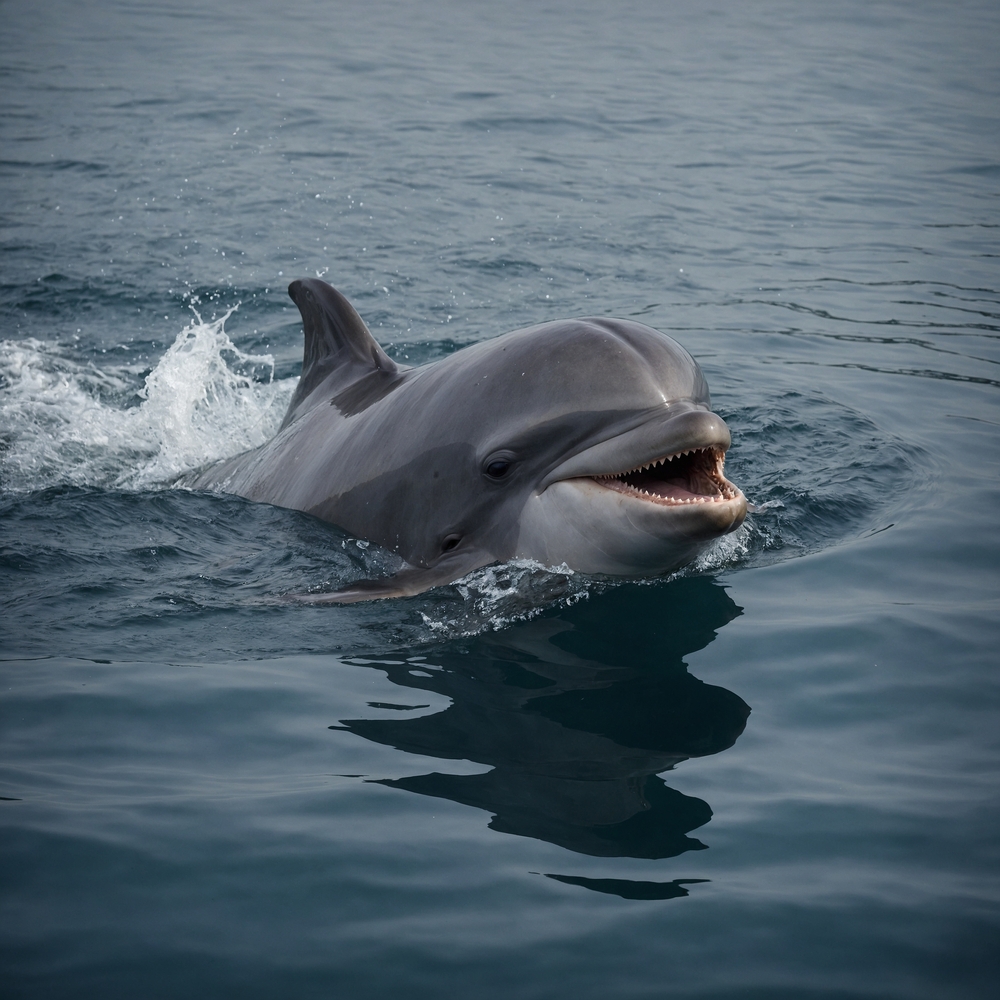
With its mischievous smile and lively demeanor, the Yangtze finless porpoise is a beloved resident of China’s longest river. Sadly, this aquatic mammal is critically endangered, with only about 1,000 individuals left. Pollution, boat traffic, and habitat degradation have severely affected their populations, making survival a daily struggle. The Yangtze finless porpoise’s plight is a stark reminder of how human activities can devastate riverine ecosystems.
A study published in the journal *Science* underscores the urgent need for comprehensive conservation strategies to prevent their decline. While efforts to create protected zones and regulate fishing are in place, the challenges of balancing economic growth with ecological preservation remain daunting. As you contemplate the future of the Yangtze finless porpoise, you realize that its fate is intricately linked to the health of one of the world’s most vital waterways. It’s a poignant call to action for sustainable living and mindful stewardship of our natural resources.
6. Philippine Eagle
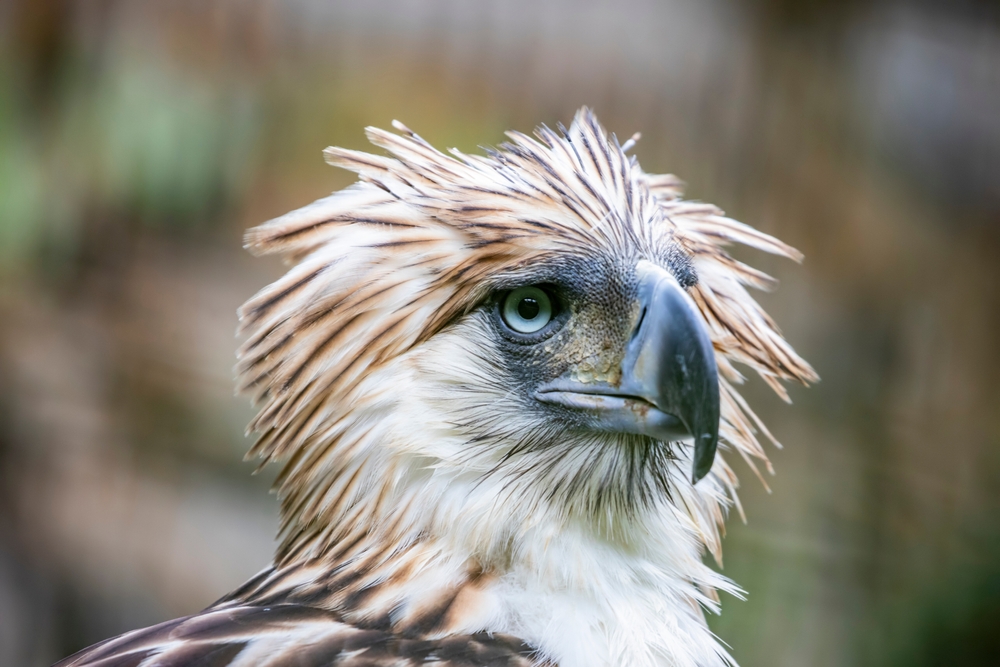
The Philippine eagle, with its striking crest and powerful beak, is a national symbol of the Philippines and one of the world’s largest and rarest birds of prey. With a wingspan that can reach up to seven feet, these majestic birds are adapted to life in the dense Philippine forests. However, deforestation and hunting have left them critically endangered, with only about 400 pairs estimated to remain. You can’t help but be captivated by their regal presence, a true emblem of nature’s grandeur.
Conservation programs are in place to protect these eagles and their habitats, but the challenges are immense due to the continued loss of forest cover. Breeding programs have been somewhat successful, yet the ongoing threat of habitat destruction looms large. As you learn about the Philippine eagle, you recognize the interconnectedness of species and habitats, understanding that preserving one often means saving another. Their survival story is a testament to the complex, fragile web of life on Earth.
7. Javan Rhino
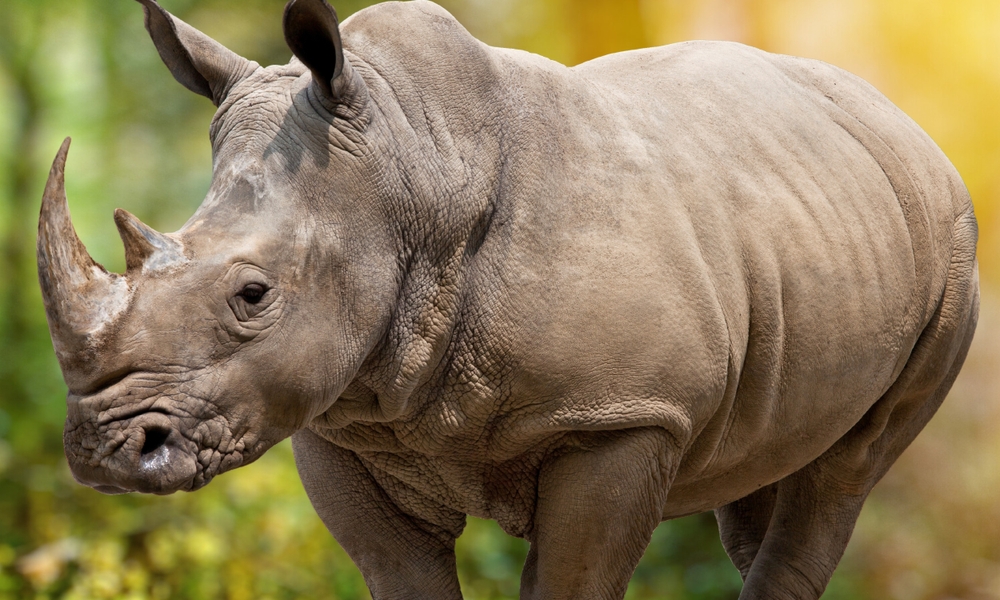
Rarity defines the Javan rhino, with fewer than 75 individuals remaining in the wild, all confined to Ujung Kulon National Park in Indonesia. These elusive creatures, with their armor-plated skin, are a symbol of resilience yet face imminent extinction due to habitat loss and poaching. Unlike their African cousins, Javan rhinos are solitary and shy, making them harder to study and protect. Their struggle for survival is emblematic of the pressures faced by many large mammals in Southeast Asia.
A recent report by WWF emphasizes the critical importance of habitat protection and restoration efforts to secure a future for the Javan rhino. The report highlights the success of anti-poaching initiatives but warns that habitat encroachment remains a severe threat. You find it heartening to see dedicated conservationists working tirelessly to monitor these rhinos, fostering hope in a seemingly dire situation. Protecting the Javan rhino is not just about saving a species; it’s about preserving a unique part of our planet’s natural heritage.
8. Saola
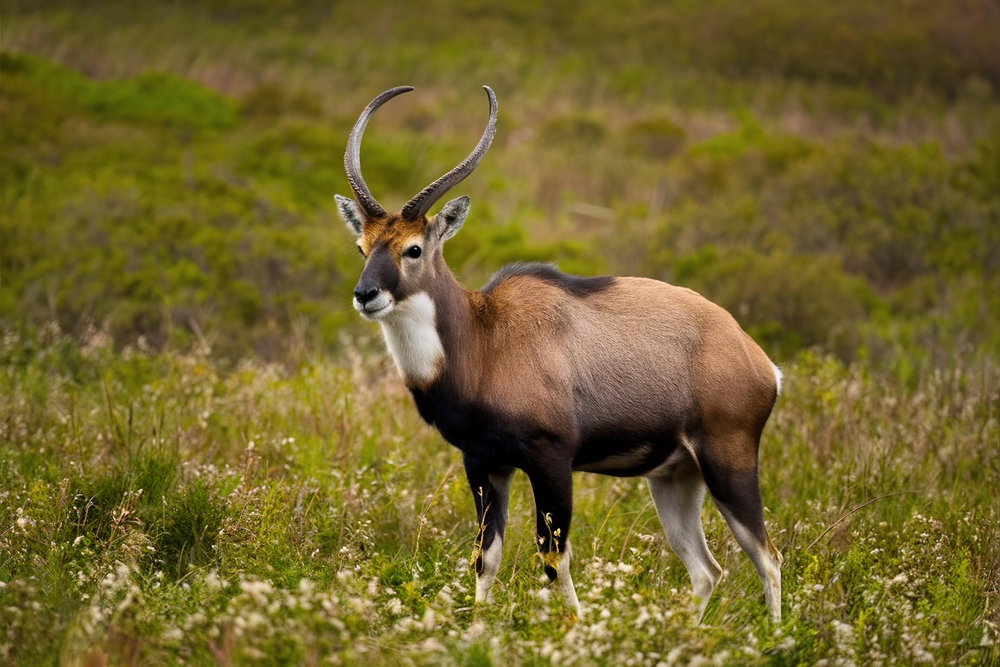
Dubbed the “Asian unicorn,” the saola is one of the world’s rarest large mammals, residing in the Annamite Range of Vietnam and Laos. With its gracefully long horns and gentle nature, this antelope-like creature was only discovered by science in 1992. Fewer than 100 are believed to exist, their populations threatened by hunting and habitat fragmentation. Despite its elusive nature, the saola’s plight captures the imagination, a silent call for conservation attention.
Efforts to protect the saola include establishing protected areas and engaging local communities in conservation activities. The challenges are significant, given the remote and rugged terrain they inhabit, but the commitment of local and international organizations holds promise. As you learn about the saola, you realize the importance of preserving the biodiversity of Southeast Asia’s forests. The quest to save the saola symbolizes hope and the relentless human spirit in the fight against extinction.
9. Nassau Grouper
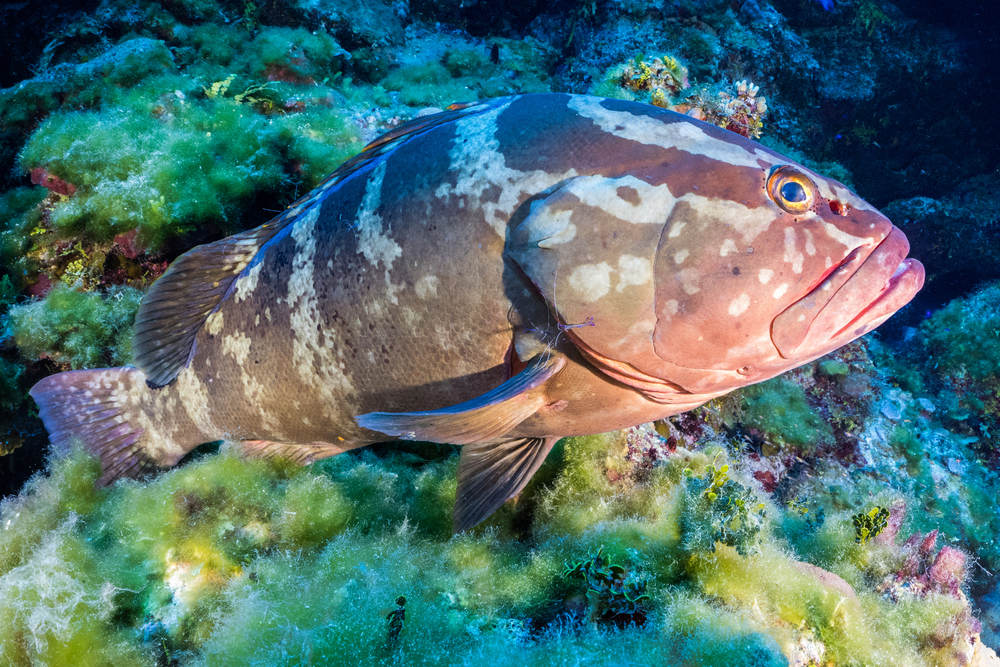
The Nassau grouper, with its vibrant colors and distinctive body markings, is an iconic reef fish of the Caribbean. Once abundant, its population has plummeted due to overfishing and the loss of coral reefs, leading to its critically endangered status. These fish play a crucial role in maintaining the health of coral reef ecosystems, yet their future hangs by a thread. As you explore the underwater world, you see the Nassau grouper as a vital link in the chain of ocean life.
Conservation efforts include fishing bans during spawning seasons and the establishment of marine protected areas. These measures aim to give the Nassau grouper a fighting chance to recover and fulfill its ecological role. You feel a sense of urgency to protect these vibrant creatures, knowing that their decline can have cascading effects on the entire marine ecosystem. The Nassau grouper’s story is a reminder of the delicate balance that sustains life beneath the waves.
10. Gharial
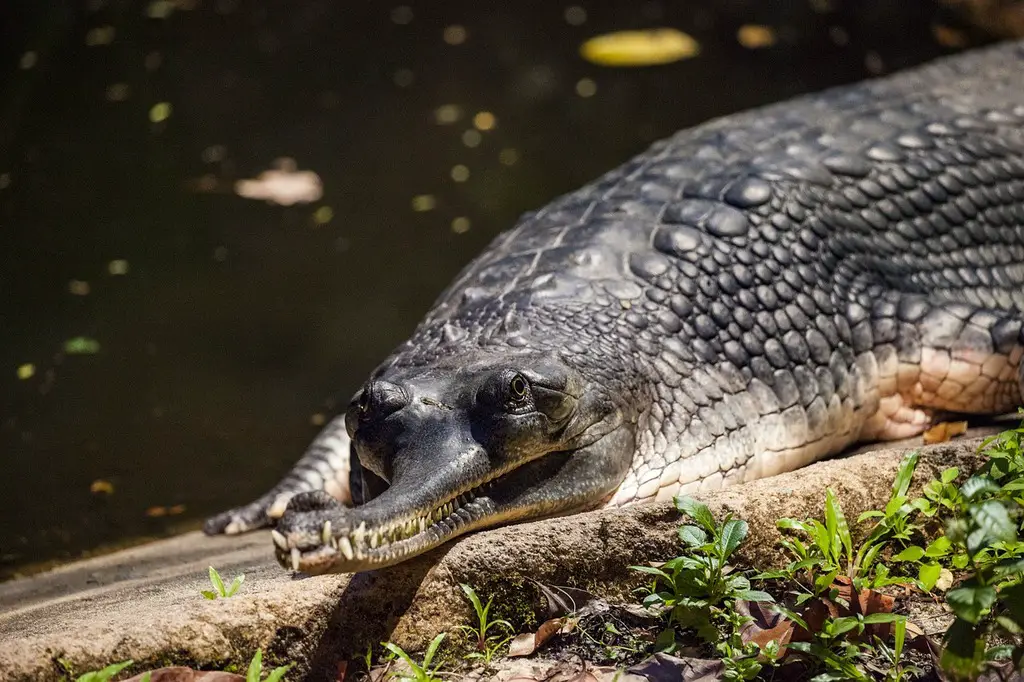
With its long, slender snout and sharp teeth, the gharial is a unique crocodilian native to the rivers of the Indian subcontinent. Once widespread, it is now critically endangered, with fewer than 1,000 individuals remaining due to habitat loss and pollution. Their specialized diet of fish and need for pristine river habitats make them vulnerable to environmental changes. In the face of adversity, the gharial stands as a testament to the wonders of adaptation and evolution.
Conservation efforts focus on habitat restoration and captive breeding programs to bolster their numbers in the wild. Challenges remain, as human activity continues to alter their natural habitats at an alarming rate. As you ponder the gharial’s fate, you become acutely aware of the impact of human expansion on river ecosystems. Their survival is not just about saving a species but about safeguarding the health of rivers that sustain countless forms of life.
11. Aye-Aye
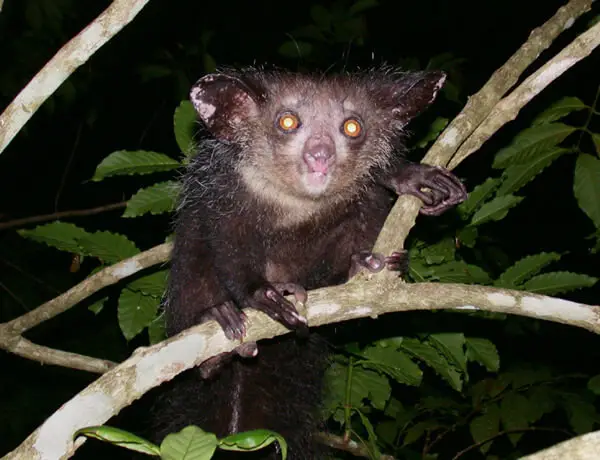
The aye-aye, a nocturnal lemur native to Madagascar, is one of the most unusual primates in the world. With its large eyes, bushy tail, and elongated middle finger, it has evolved to fit its niche as an insect hunter. Despite its distinctive appearance, the aye-aye is endangered due to deforestation and cultural superstitions that consider it an omen of bad luck. The mystery and allure of the aye-aye make it a fascinating subject for those who appreciate nature’s quirks.
Efforts to save the aye-aye include habitat protection and community education programs to dispel myths about the animal. The task is daunting, as Madagascar’s forests continue to face threats from agriculture and logging. You find hope in the dedicated conservationists who work tirelessly to ensure the aye-aye’s survival. Their mission is not just about preserving a species, but about celebrating the diversity and wonder of the natural world.
12. Northern Bald Ibis
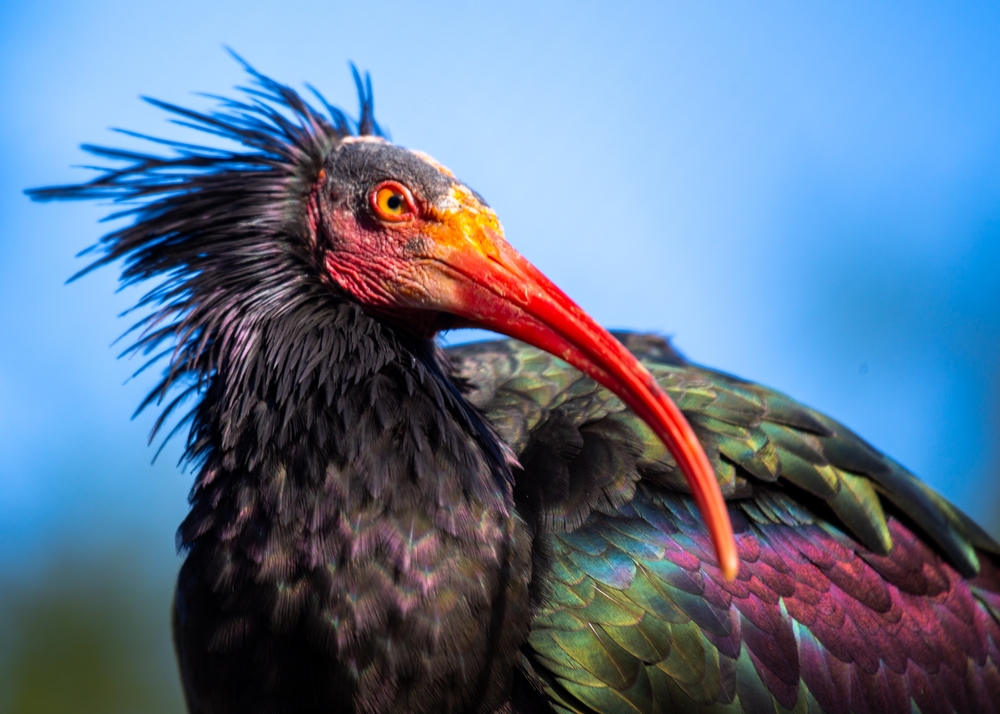
With its bald head and iridescent plumage, the northern bald ibis is a striking bird native to the rocky cliffs of North Africa and the Middle East. Once widespread across Europe, this bird is now critically endangered due to habitat destruction and hunting. Fewer than 700 individuals remain in the wild, making it one of the rarest birds on the planet. You can imagine the haunting sight of these birds soaring against a backdrop of ancient landscapes.
Conservationists are working to protect nesting sites and reintroduce the northern bald ibis to areas where it has been extirpated. Successes in captive breeding programs offer a glimmer of hope, but challenges remain in addressing threats from human activity. As you learn about the northern bald ibis, you realize the importance of preserving cultural and natural heritage. Their survival is a testament to the resilience of life and the power of conservation efforts.
13. Red Wolf
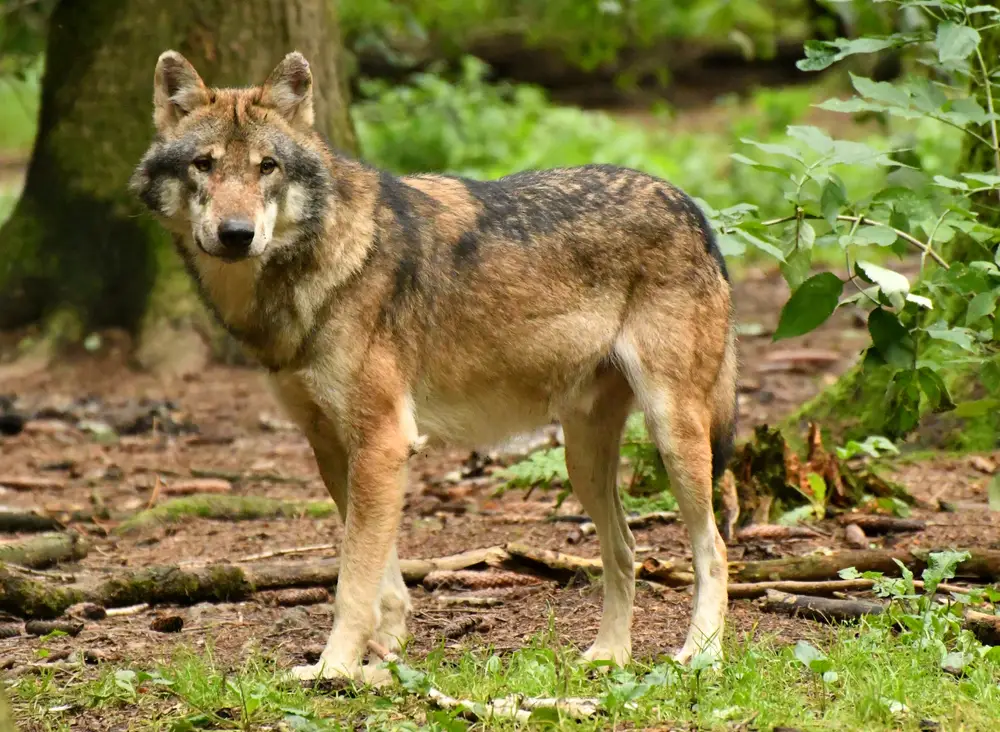
The red wolf, a species native to the southeastern United States, is one of the world’s most endangered canids. With fewer than 20 individuals left in the wild, the red wolf faces extinction due to habitat loss, hybridization with coyotes, and human persecution. These wolves once roamed across the southeastern U.S., playing a crucial role in maintaining the balance of ecosystems. You might find yourself captivated by their haunting howls and the wild spirit they embody.
Conservation efforts include captive breeding, habitat restoration, and reintroduction programs aimed at bolstering their numbers. The road to recovery is long and fraught with challenges, but the determination of conservationists inspires hope. As you reflect on the red wolf’s plight, you recognize the importance of coexistence and the need to protect our natural heritage. Saving the red wolf is a reminder of the interconnectedness of all living things and the role we play in their survival.
14. Spoon-Billed Sandpiper
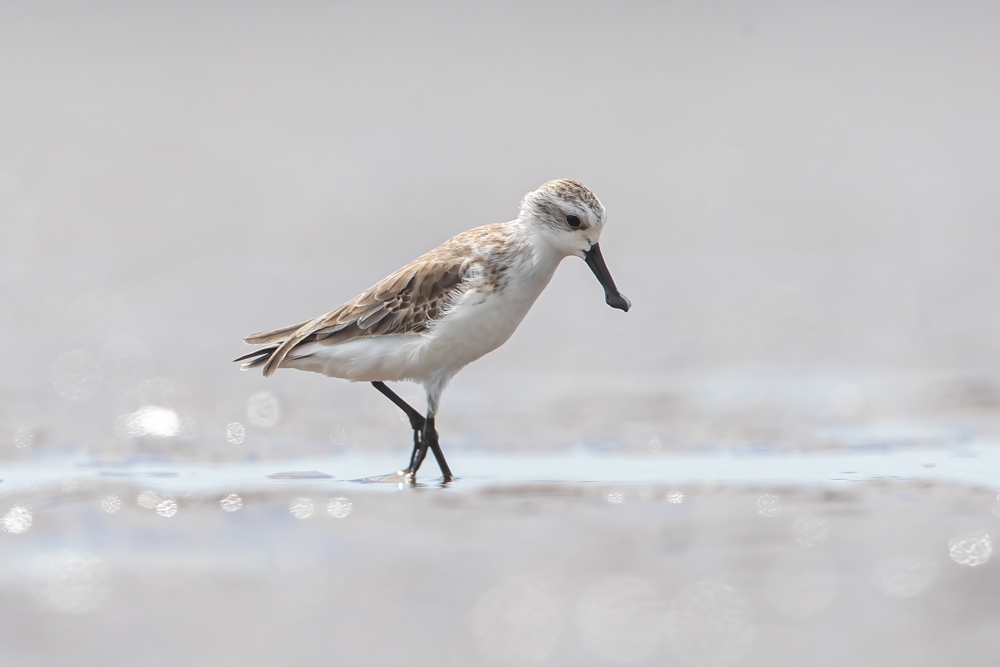
The spoon-billed sandpiper, with its distinctive spoon-shaped bill, is a small wader that breeds in the remote tundra of Russia and migrates to Southeast Asia. This critically endangered bird is facing extinction due to habitat loss in its breeding and wintering grounds. Fewer than 800 individuals remain, making it one of the rarest shorebirds in the world. You can envision the delicate sandpiper navigating vast migratory routes, a testament to endurance and survival.
Conservation efforts are focused on protecting key habitats and addressing threats from hunting and climate change. Despite the challenges, the collaborative efforts of international organizations offer hope for the future of the spoon-billed sandpiper. As you learn about their incredible journey, you’re reminded of the importance of global cooperation in conservation. The plight of the spoon-billed sandpiper highlights the urgent need to protect migratory pathways and preserve biodiversity.
15. Hirola
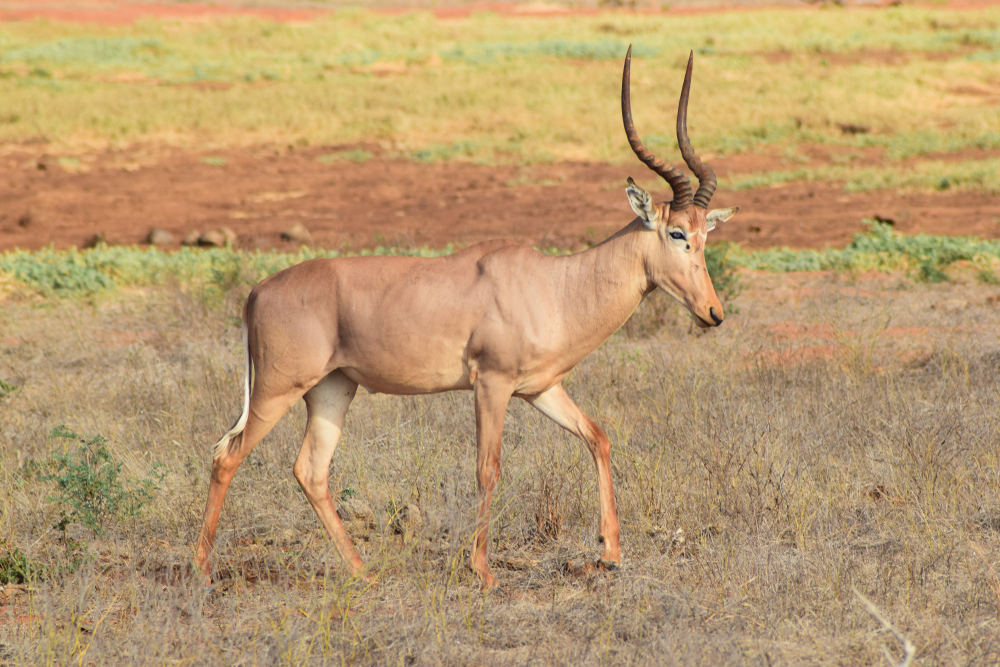
Known as the world’s most endangered antelope, the hirola, or Hunter’s hartebeest, is native to the arid grasslands on the border of Kenya and Somalia. With its elegant horns and striking facial markings, the hirola is a master of adaptation to harsh environments. However, with fewer than 500 individuals remaining, it faces extinction due to habitat loss, poaching, and disease. The hirola’s plight is a sobering reminder of the fragility of life in some of Earth’s most challenging regions.
Conservationists are working to create protected areas and support community-driven conservation initiatives to safeguard the hirola’s future. The challenges are significant, and the road to recovery is long, but hope remains in the form of committed local and international efforts. As you contemplate the hirola’s future, you understand the importance of preserving the delicate balance of ecosystems. The story of the hirola is a call to action for preserving the rich tapestry of life on our planet.
